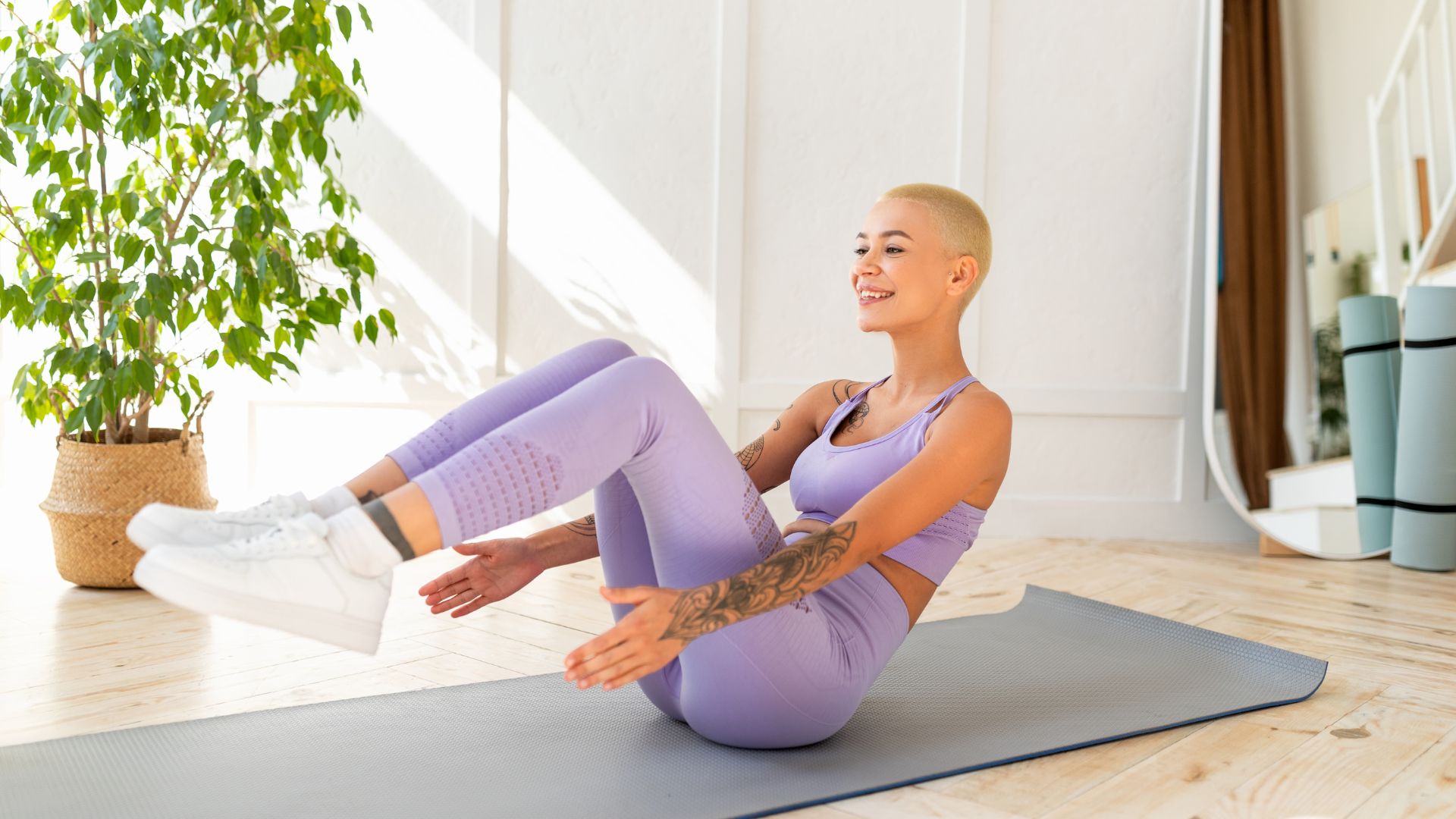
If you spend most of your days sat slouched over a screen, chances are your posture isn’t the best. Poor posture can lead to pain in our back, shoulders and neck, and it can even effect our balance. Need to give yours a bit of a re-fix? This eight-move Pilates workout can help and all you'll need is yourself and a mat.
This workout comes from Lotty Campbell Bird, a Pilates and barre instructor, and founder of The Collective Fitness Studio based in the Cotswolds. "These movements are a great way to mobilise the joints, so we can work them through a full range of motion and move freely without tension," she says. "Additionally, each exercise trains us to use our muscles efficiently to improve strength and increase flexibility.”
Ready to improve your posture and feel that full-body burn? Grab a mat or a towel and give Lottie's workout a go...
1. Ab prep
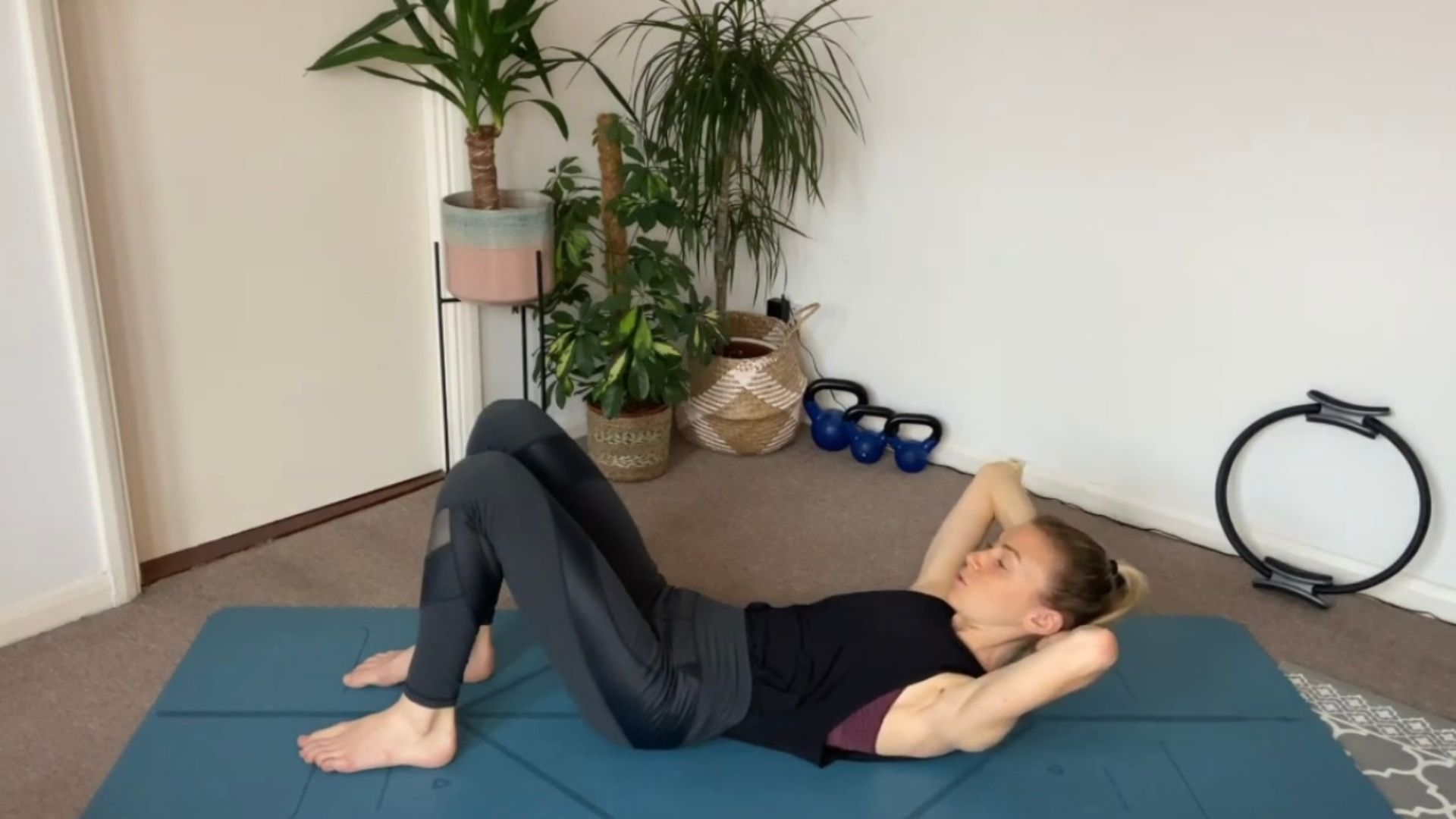
Benefits: Finding stability in a neutral pelvis provides the most efficient and effective way to engage the abdominals and pelvic floor muscles and the flexion in the upper back helps to improve mobility in the spine.
How to:
- Lie flat on your back with your knees bent in a comfortable position
- Legs are parallel, spine is neutral (the normal curve of the lumbar spine/lower back is present) and pelvis and hands interlaced behind your head to support the neck
- Inhale to prepare then, as you exhale, start to lift the head, neck and shoulder blades off the mat as you stabilise through the upper back and engage through the abdominal wall
- Exhale to lower
Reps/sets: 10-12 reps, repeat two times
2. Pilates Hundred
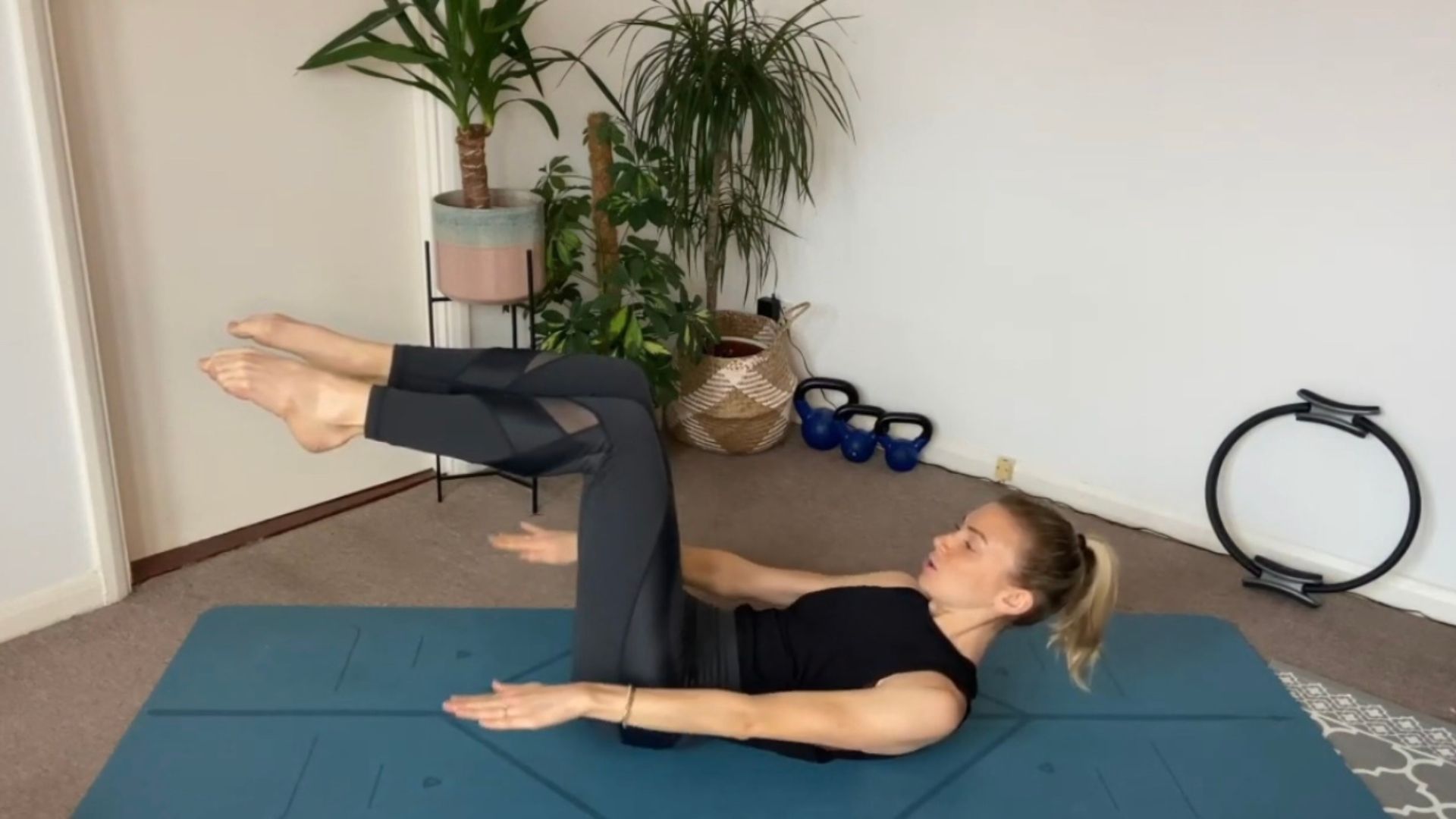
Benefits: This exercise is named after the 100 pulses that you make with your arms. It deepens the work for your abdominals and pelvic floor muscles as well as your shoulder stabilisers in the back to maintain the upper body flexion.
How to:
- Lie on your back with a neural spine and bring your legs to a table top with your head, neck and shoulder blades hovering just off the mat
- Start to pulse your arms up and down with energy and resistance through the palms
- Aim for 24 pulses, with a short 10-second rest betweens and lowly build this up to 100 pulses in on go
Reps/sets: Aim for 24 pulses, with a short 10-second rest between, repeat two times. Slowly build this up to 100 pulses in on go
3. Bridge
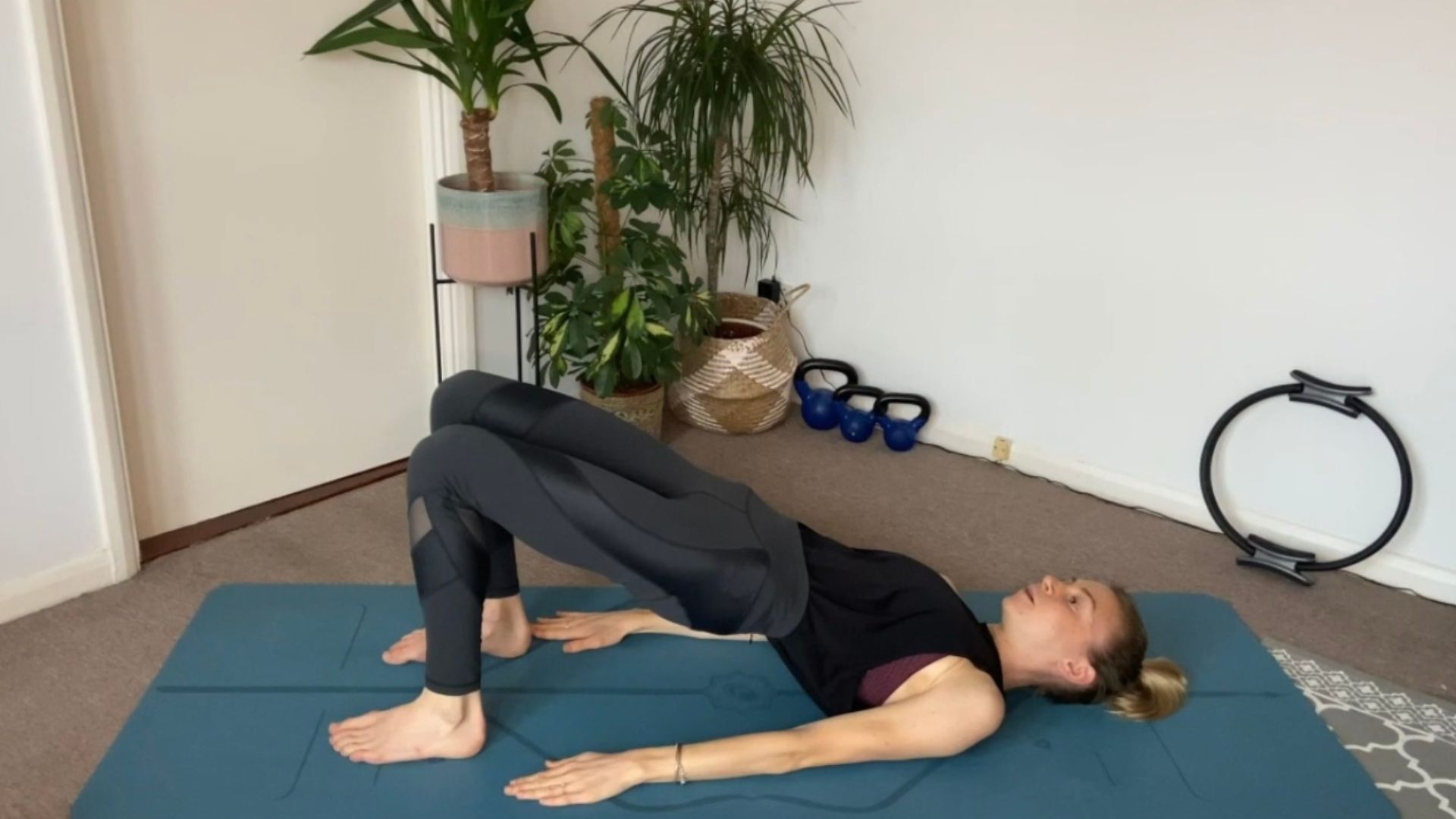
Benefits: This exercise strengthens the posterior chain of the body, engaging the glutes and hamstrings to offer increased stabilisation and mobility in the spine.
How to:
- Lie flat on your back with your knees bent in a comfortable position and legs parallel
- On an exhale, lift your spine sequentially, one vertebrae at a time, into an elevated bridge position
- You should create one long line running from your shoulders, to your hips and knees, whilst keeping your thighs hip distance apart and hips level
- On your inhale, roll back down through each vertebrae to return to your starting position
Reps/sets: 6-8 reps, repeat two times
4. Half roll back
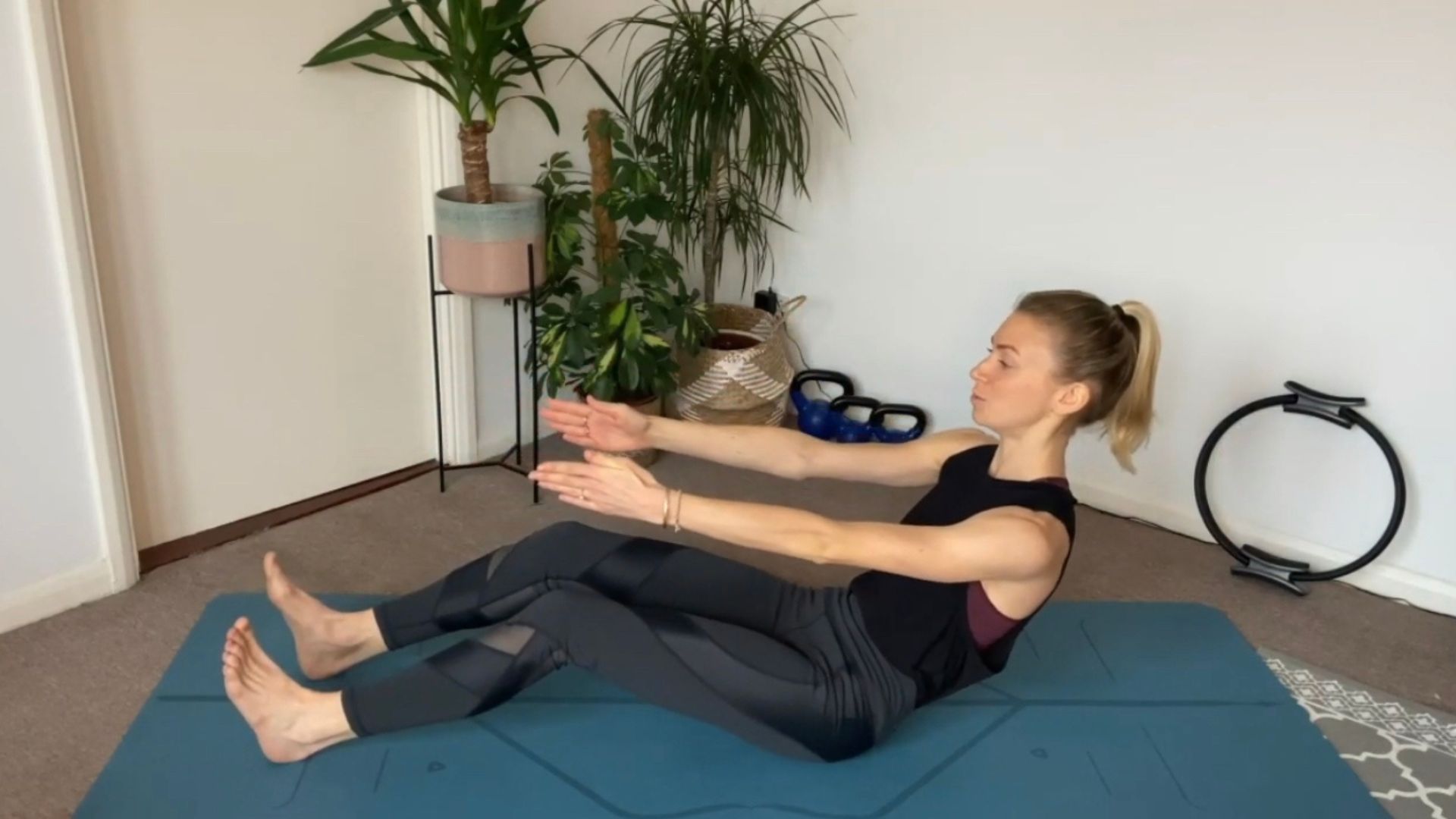
Benefits: This exercise strengthens the posterior chain of the body, engaging the glutes and hamstrings to offer increased stabilisation and mobility in the spine.
How to:
- Find an upright seated position, with a straight spine and knees bent
- On an exhale, begin to tilt the pelvis under and roll the spine backward, halfway down towards the floor, finding flexion in the lumbar spine
- On an inhale, return to your starting position, finding a straight spine
Reps/sets: 8-10 reps, repeat two times
5. Spine twist
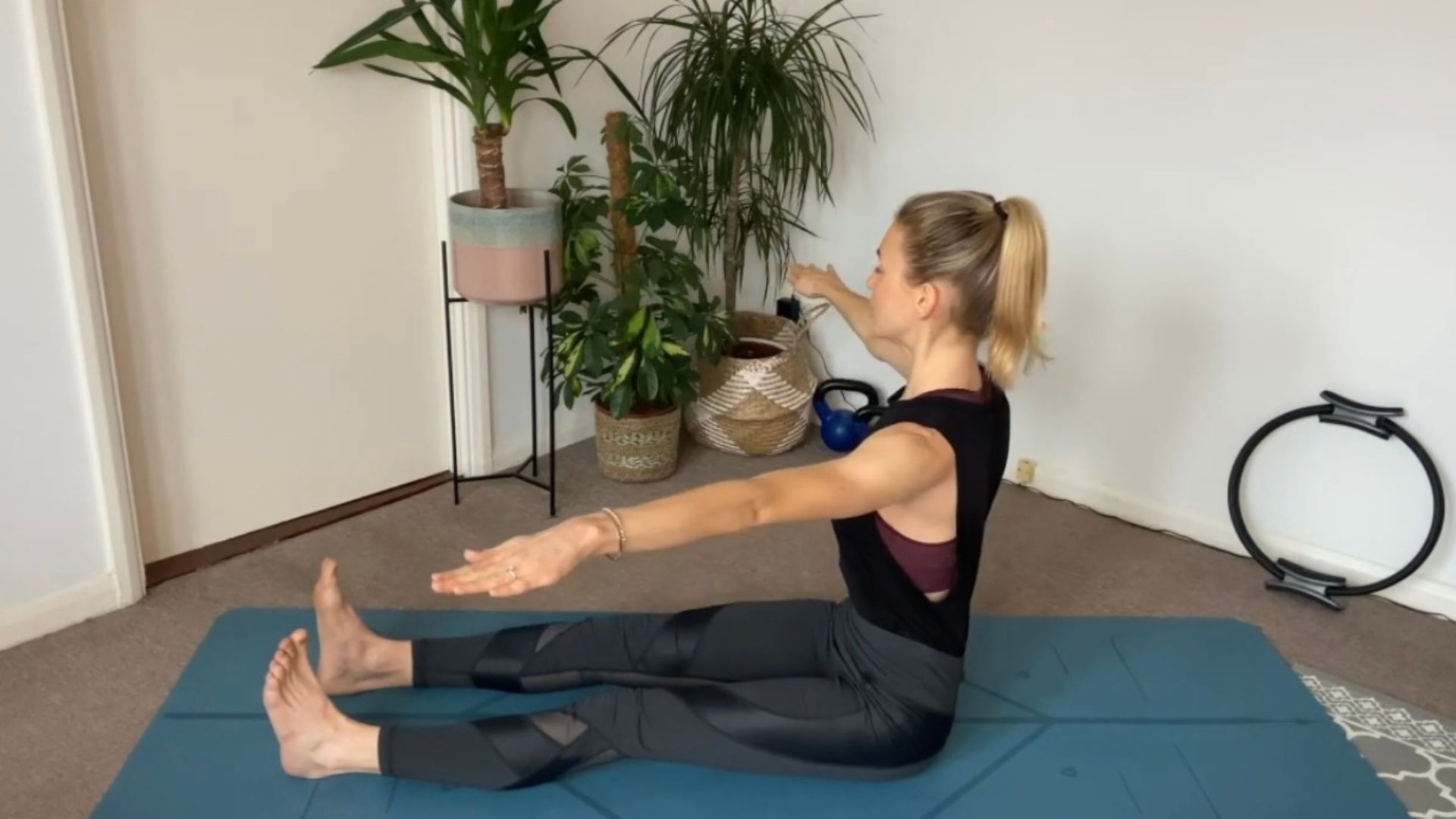
Benefits: One of the best exercises to improve mobility of the spine as you find rotation, as well as working the obliques, pelvic floor and upper back muscles.
How to:
- Sit upright with your legs out in front, as straight as possible, imagine that you have a piece of string pulling you up through the crown of your head to lengthen through the spine
- Extend your arms to the side, with your palms facing down
- As you exhale, begin to twist the upper body round to the right, without moving your hips
- Inhale, return to the centre, before exhaling to repeat the twisting movement round to the left
Reps/sets: 5 reps, repeat two times
6. All fours
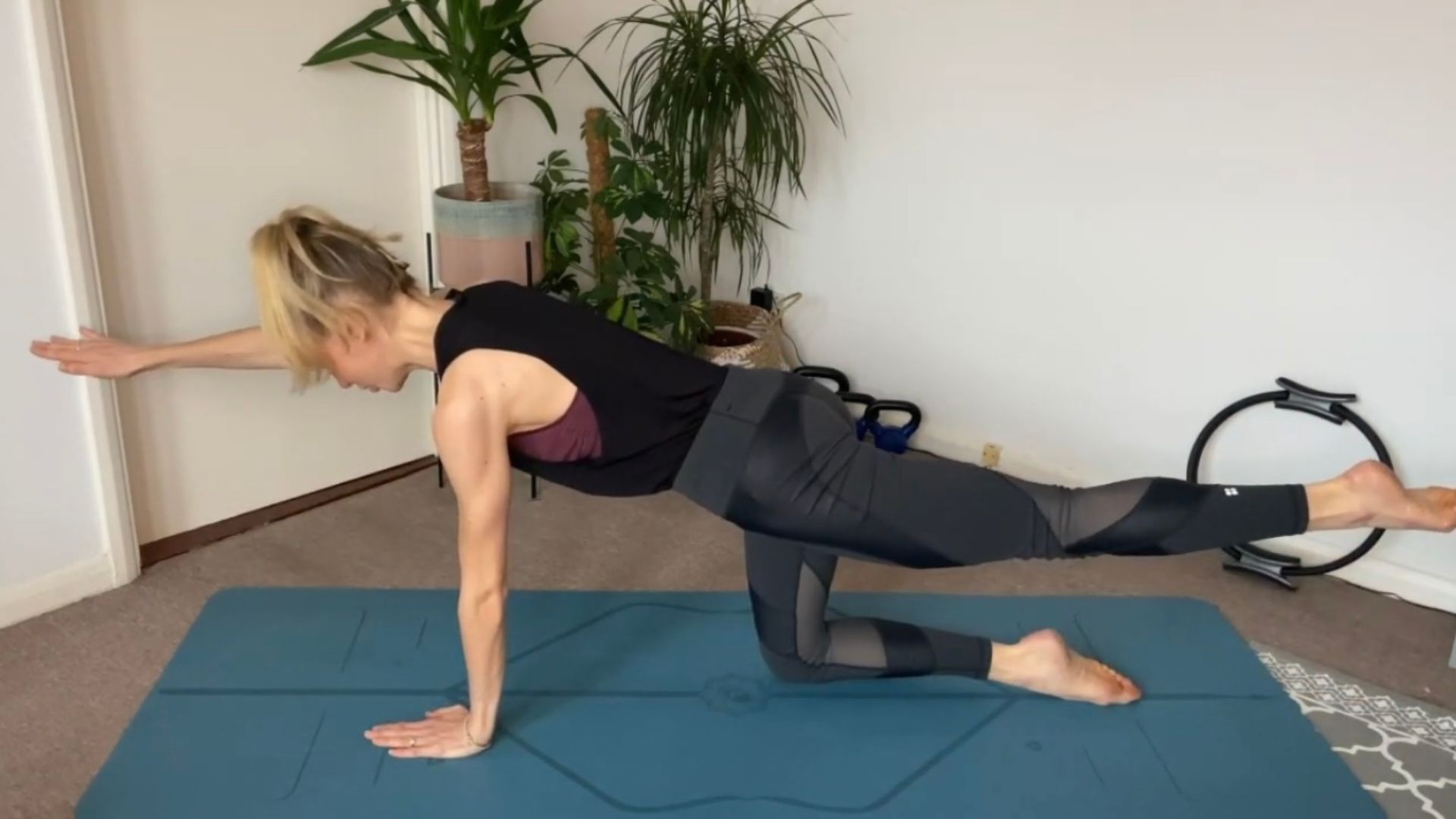
Benefits: This movement is a great way to engage your abdominal muscles to stabilise the pelvis and work the muscles in the arms and back to stabilise the spine.
How to:
- Take your hands under your shoulders, and knees under your hips., and find a neural spine as you imagine you have a cup of tea balanced on your tailbone
- Maintain your square shoulder and hip placement in the all fours position
- As you exhale and extend the opposite arm and leg away from one another reaching out through your fingertips and toes
- Inhale to return to the start position
Reps/sets: 8-10 each side, repeat two times
7. Plank
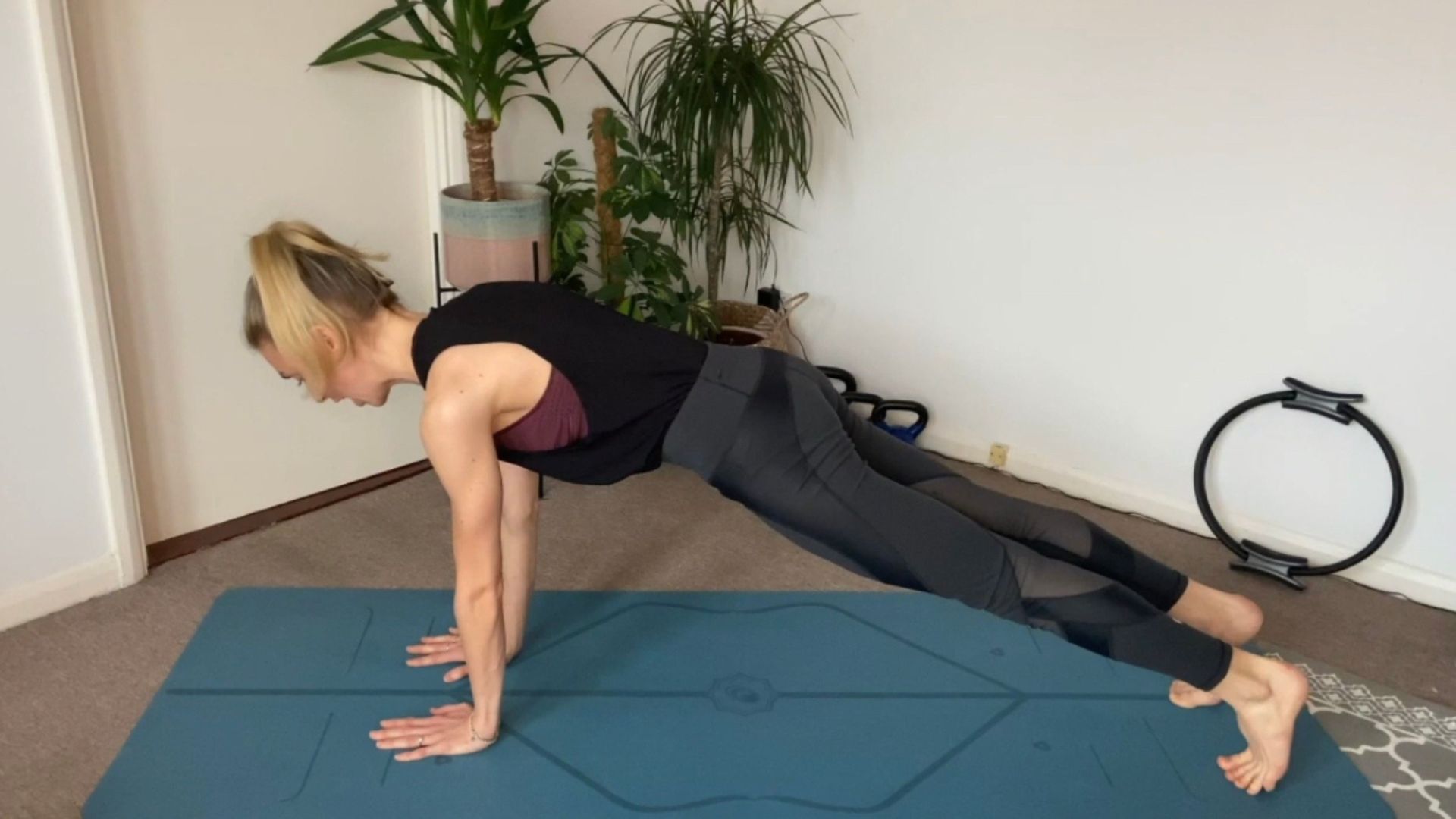
Benefits: Think of the plank as a full-body exercise, where every single muscle is engaged to support the body and also as an opportunity to lengthen and strengthen the spine.
How to:
- With hands under shoulders, find one long line through the spine with your legs reaching behind you, or modify with knees bent on the mat
- Keep your eyeline long in front of your fingertips and maintain a neutral pelvis
- Find strength in stillness, maintaining perfect form in this position
Reps/sets: hold between 30-90 seconds, repeat two times
8. Upper back extensor
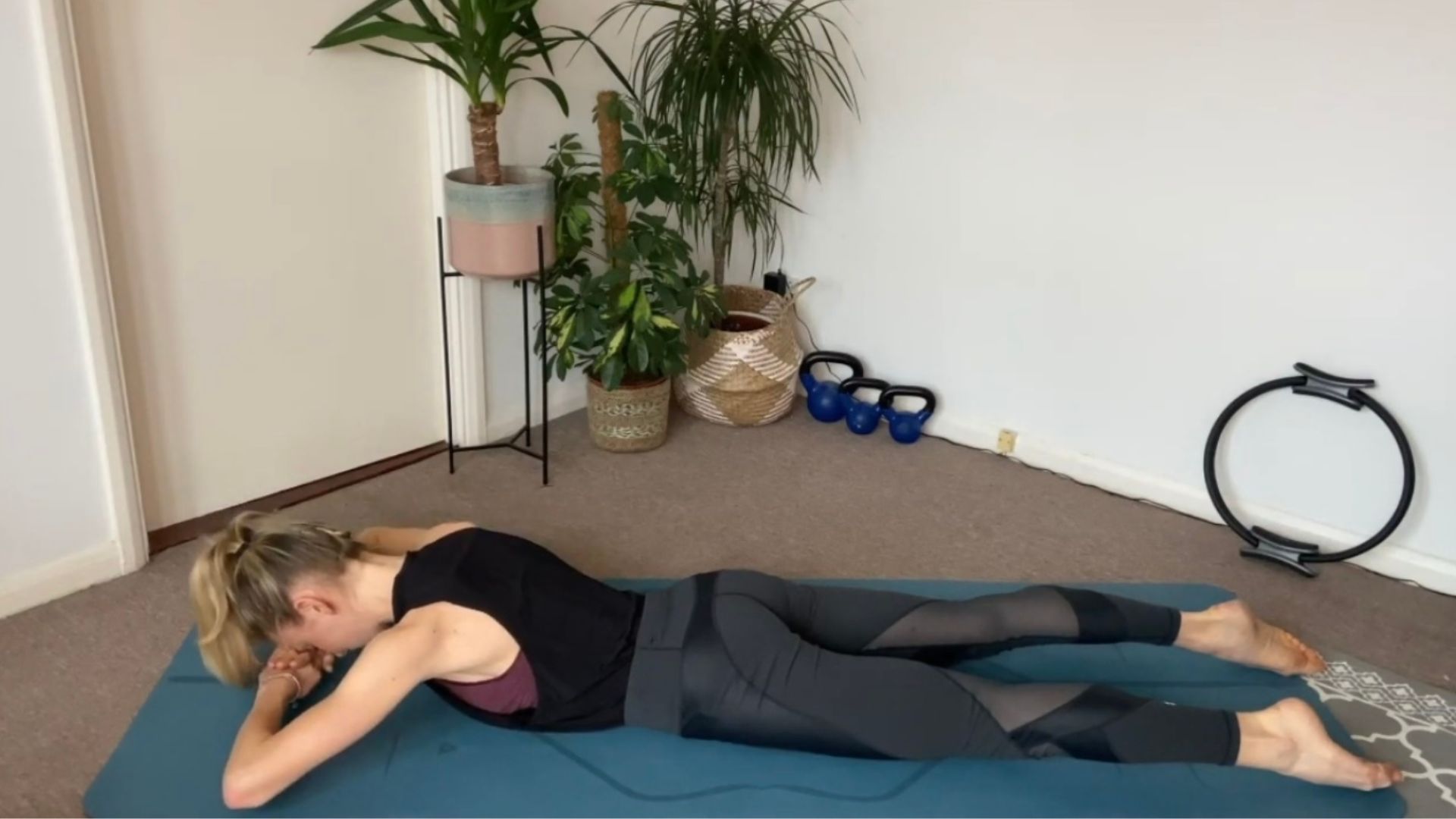
Benefits: This movement enables you to stabilise the mid and lower back as you lift the upper back into extension and improves mobility and strength in the shoulder stabilisation and erector spinae muscles, which run down the length of the spine.
How to:
- Lie on your front with legs extended and with one hand stacked on top of the other to support your forehead
- Exhale and begin to lift the head, neck and tip of the shoulders off the mat, working though the upper back in isolation, rather than arching into the mid/lower back and keep the eye line down towards the floor
- Inhale to return
If you enjoyed this workout, make sure you give Lottie's three-move glute workout a go (the glutes are key in helping us move efficiently, contribute towards good posture and improve athletic performance). Alternatively, if you fancy a Pilates core workout, this one from Lottie is perfect for beginners and will leave your mid-section on fire (in a good way).







